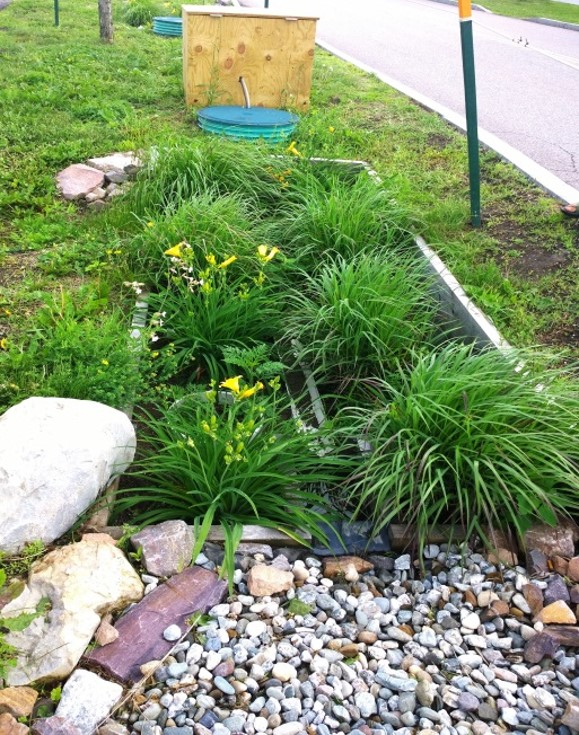Bioretention Cells: A Greener Way to Manage Stormwater Pollution
Feb. 16th 2018Urban stormwater is one of the biggest contributors of nonpoint source pollution, impacting urban waters by contributing excess sediment and nutrients. Communities are searching for ways to improve stormwater management through methods, such as green stormwater infrastructure (GSI). GSI focuses on reducing impervious surfaces and uses strategies, including promoting infiltration, reusing stormwater, and groundwater recharge.
One GSI strategy is bioretention, which features planted basins sunken into the ground (about one meter or less) filled with porous materials that are used to intercept, filter and treat polluted stormwater runoff. This allows stormwater to be managed onsite, restoring natural hydrologic functions in urban areas. Studies have shown that bioretention systems are good for removing some pollutants but are less clear on their nutrient removal success. Researchers at the University of Vermont studied roadside bioretention cells in Burlington, Vermont and their nutrient removal success. Climate change projections of increased precipitation in the area and high amounts of phosphorus in Lake Champlain, causing algal and cyanobacterial blooms, informed the study design. Overall, results showed bioretention sites can successfully be used to manage pollutant-containing stormwater runoff and keep it from entering sewers.
Eight equally-sized bioretention cells were used in this study, which were monitored from May to November in 2015 and 2016. Time-based sampling was used to collect water samples at the inflow and outflow. Three treatments were used, each in different bioretention cells: vegetation, soil media, and an enhanced runoff plus rainfall treatment to increase runoff input into the cells.
Samples were analyzed for nutrients, including total nitrogen and total phosphorus. Soil media was overall the most effective treatment at removing nutrients and improving water quality.
Data showed bioretention systems exhibited a higher capacity for treating small storm events (less than one inch in a 24-hour period) due to their ability to retain and reduce outflow volumes. The bioretention cells were also able to retain portions of the runoff from large storm events. However, treatment of nutrients is greatly reduced in larger storms, because the ground becomes so saturated that water is not absorbed and can become over-saturated enough that nutrients end up leaching from the soil media.
Through better understanding stormwater runoff composition, bioretention cells can be better designed to accurately remove major pollutants in stormwater, minimizing their transport to downstream waterbodies. Increased precipitation caused by climate change could threaten the effectiveness of bioretention cells. Based on results of the study, the larger storms were the ones that carried the most nutrients into the cells. This could be counteracted by designing bioretention systems to accommodate the increased water volumes expected from climate change. As climate change predictions forecast more heavy precipitation events for the New England region, these are important factors to keep in mind when designing successful bioretention cells.
 ecoNEWS VT
ecoNEWS VT